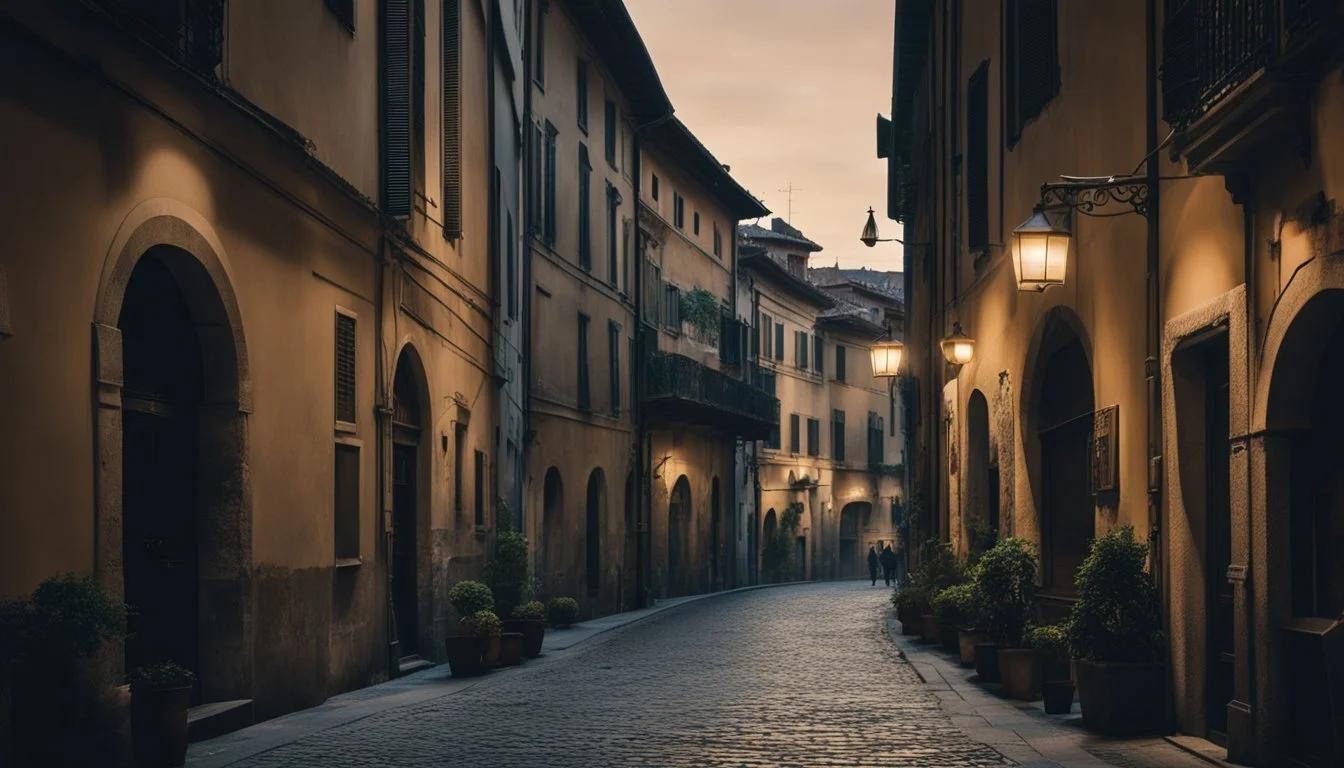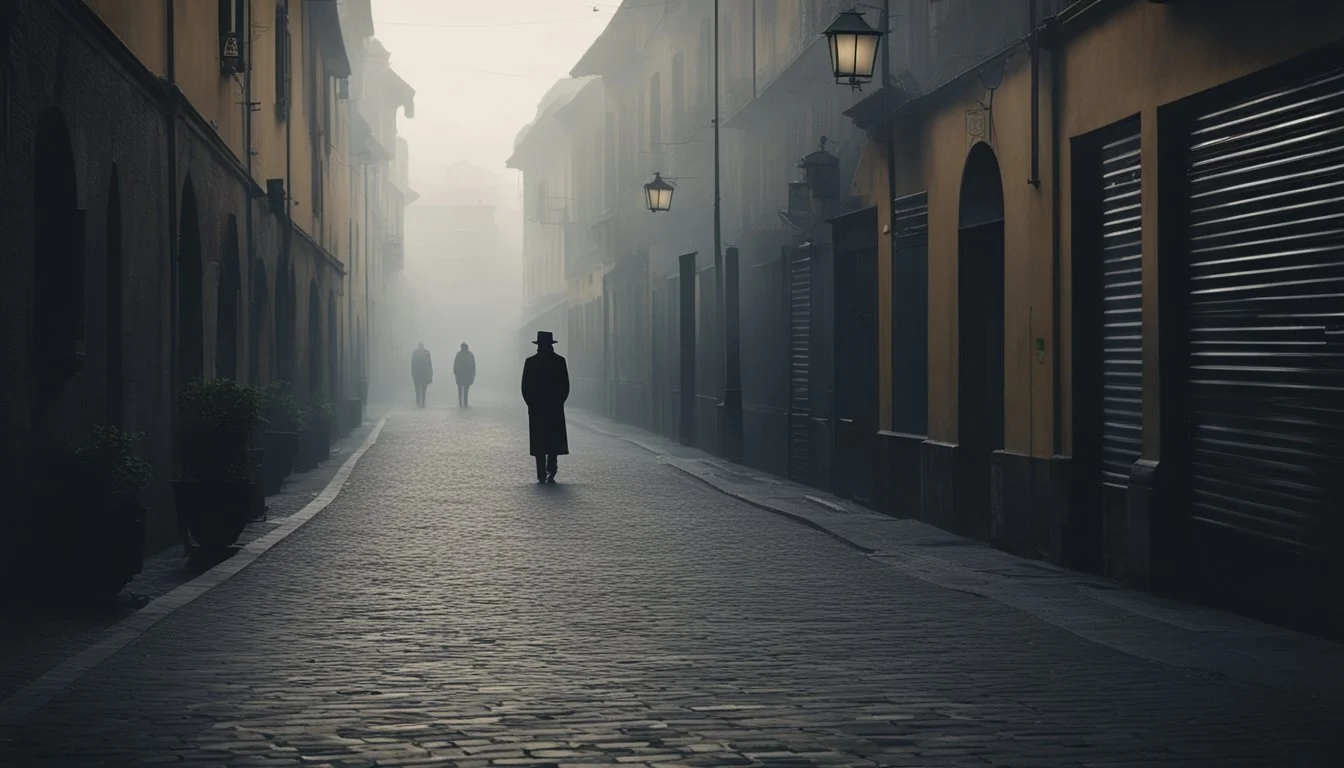5 True Crime Documentaries from Milan You Must Watch
True crime documentaries offer a gripping window into the world of crime, bringing the intricacies of investigations and the complexities of human behavior to the screen. Milan, with its rich history and dramatic transformations, serves as a compelling backdrop for these narratives, offering stories that are both engaging and revealing.
What makes these documentaries stand out is their ability to blend meticulous research with storytelling, drawing viewers into real-life mysteries and dramas. The works chosen highlight the unique facets of Milanese society, its historical context, and the darker elements that shape its landscape, providing a riveting experience for true crime enthusiasts.
1) The Disappearance of Chiara Baroni (2020)
Chiara Baroni, a young resident of Milan, mysteriously vanished in March 2020. Described as a cheerful and ambitious individual, her disappearance shocked the local community and garnered significant media attention. The documentary meticulously tracks the investigation that ensued, highlighting the tireless efforts of law enforcement and the growing public concern.
The film lays out the timeline of Chiara's last known movements, interviewing family members, friends, and detectives involved in the case. Viewers gain insight into the emotional turmoil experienced by those close to Chiara and the challenges faced by investigators.
Additionally, the documentary explores various theories that emerged, ranging from accidental disappearance to foul play. It delves into the psychological aspects affecting the family and community, making it a compelling watch for true crime enthusiasts.
For more information on the film, visit the Wikipedia page or check its IMDB entry.
2) The Case of the Milanese Strangler
The Case of the Milanese Strangler delves into one of Milan's most chilling crime sprees. This true crime documentary examines the life and crimes of a notorious serial killer active during the late 20th century.
Born in a small town, the Milanese Strangler moved to Milan in the early 1980s. He preyed on young women, leaving the city in a state of fear and turmoil.
The documentary features interviews with law enforcement officers, victims' families, and criminal psychologists. These insights provide a comprehensive look into the killer's psyche and the methods used to track him down.
Detailed analysis of crime scenes and forensic evidence reveals how painstaking efforts eventually led to the Strangler's arrest. The film also sheds light on the impact his crimes had on Milan's community and the ongoing search for justice.
This documentary stands out for its meticulous attention to detail and gripping storytelling. It is a must-watch for true crime enthusiasts wanting to understand one of Milan's darkest chapters. More Information
3) The Vanishing at Navigli
"The Vanishing at Navigli" (2023) dives into the mysterious disappearances around the Navigli canals of Milan.
This documentary explores several unresolved cases from the past two decades.
With a focus on the eerie and historical canals, the film combines testimonies from families, investigators, and local historians.
It delves into the chilling atmosphere, adding layers of intrigue to the mix.
Link: The Vanishing at Navigli on IMDb
4) Murder on the Milan Metro
"Murder on the Milan Metro" (2022) explores the chilling case of a brutal attack that occurred in 2018. This documentary delves into the details of the incident where a young commuter was ambushed and killed on her way home from work.
The film captures the investigation led by Milan's police force. Using surveillance footage, interviews with witnesses, and expert analysis, it pieces together the events leading to the attack.
Viewers are given a glimpse into the life of the victim and the impact of her death on the community. The documentary also addresses broader issues of safety and security on public transportation.
The gripping narrative structure keeps the audience engaged, maintaining a balance between storytelling and factual reporting. The film sheds light on the efforts of law enforcement to bring the perpetrator to justice.
For more information on the film, visit IMDB.
5) The Unsolved Case of Lucia Ferrara (2022)
The chilling story of Lucia Ferrara remains one of Milan's most notorious unsolved cases. Lucia, a 28-year-old artist, was found dead in her studio in 1998. The details surrounding her mysterious death have captured public attention and led to numerous theories, none of which have been conclusively proven.
This documentary delves deep into the investigative process, showing interviews with key figures involved in the case. Detectives, friends, and family members provide insights into Lucia's life and the possible motives behind her untimely death. The cinematography effectively highlights the eerie atmosphere of Milan's art scene during that period.
Despite extensive investigations, crucial pieces of evidence are still missing. This has left the case open to speculation. The film intricately weaves these elements to maintain suspense and keep viewers engaged.
For those interested in diving into the enigma, the documentary stands as a compelling piece. It portrays the relentless quest for answers that remains unresolved to this day.
More information: The Unsolved Case of Lucia Ferrara (IMDb)
Cultural Context of True Crime in Milan
True crime in Milan has deep historical roots and substantial societal impact. Understanding these facets helps explain the city's unique relationship with the genre.
Historical Background
Milan, a major European city, has witnessed numerous historical crimes that set the stage for its current true crime narrative. The city's industrial boom in the late 19th and early 20th centuries attracted a diverse population. This influx contributed to various criminal activities, including organized crime, which later became central to many true crime stories.
Key events, such as the infamous Stazione Centrale bombings and high-profile mafia trials, have shaped Milan's crime history. These events provide rich material for documentary filmmakers, making the city a focal point for true crime content. Milan's history thus supplies a fertile ground for stories that intrigue and inform viewers about complex criminal activities.
Societal Impact
True crime documentaries about Milan do more than entertain; they influence public perceptions and social dynamics. The vivid portrayal of historical and contemporary crimes fosters a heightened sense of vigilance among residents. These documentaries often highlight systemic issues such as corruption and inefficiencies within the legal system.
Moreover, the depiction of real-life crimes can impact tourism and local businesses. While some viewers may be drawn to visit the city out of curiosity, others might feel apprehensive. True crime content also sparks important conversations about justice and societal safety, encouraging civic engagement and reforms.
Analyzing the Filmmaking Techniques
These documentaries from Milan employ distinct narrative structures and visual storytelling methods to create a captivating experience for viewers. The use of real-life events and stylistic choices are crucial in conveying the gravity and intrigue of the cases involved.
Narrative Structure
The narrative structure of these Milanese true crime documentaries often relies on a chronological recounting of events. This method ensures that viewers can easily follow the development of the case from start to finish.
Flashbacks and interviews with key figures, such as investigators, victims' families, and occasionally the accused, provide depth and multiple perspectives. The inclusion of expert analysis and legal commentary helps to clarify complex legal issues and the nuances of criminal behavior.
Some films employ a non-linear narrative, which introduces elements of surprise and suspense by revealing critical information at strategic points. This technique keeps the audience engaged and questioning the unfolding story.
Visual Storytelling
Visual storytelling in these documentaries often involves the use of archival footage, crime scene recreations, and dramatic re-enactments. Archival footage lends authenticity and a factual basis, while recreations and re-enactments visualize events that were not captured on camera.
Cinematic techniques such as close-ups, panning shots, and shadowy lighting enhance the emotional impact. Close-ups provide an intimate look at interviewees' expressions, which can convey their emotional state more powerfully than words alone.
Graphics and maps are utilized to illustrate events and locations, making the narrative more comprehensible. Visual overlays of court documents or police evidence underscore the factual underpinnings and support the documentary's credibility.
Filmmakers also utilize color grading and musical scores to set the tone and ambiance, heightening tension and guiding viewer emotions throughout the documentary.








